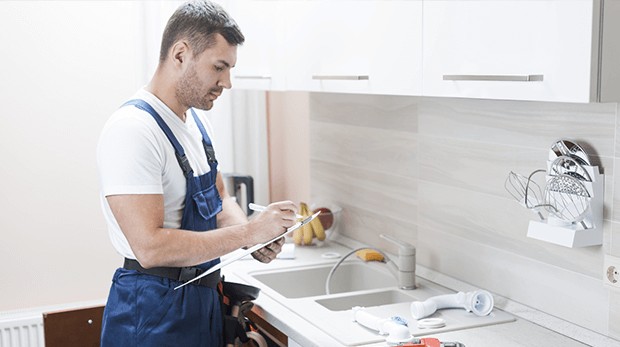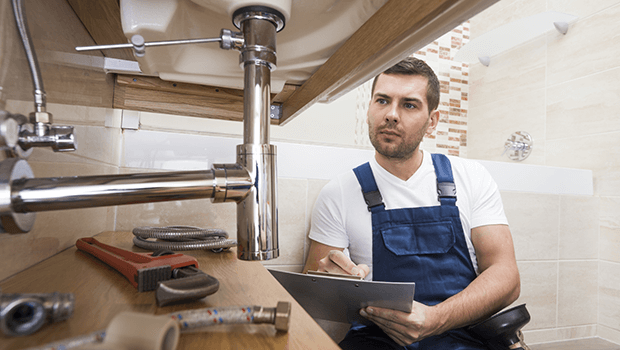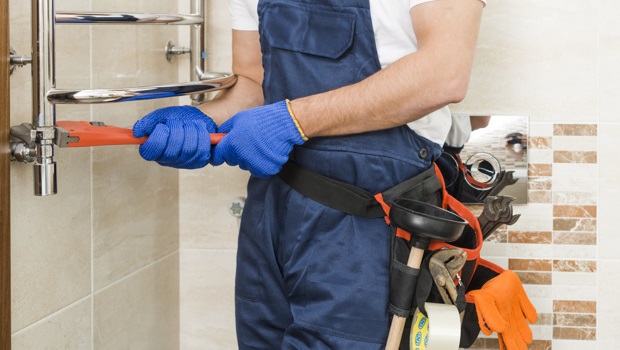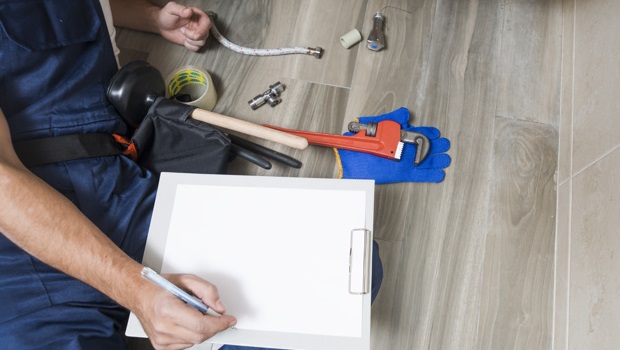Is the high cost of your monthly water bill a mystery to you? Perhaps there is a “leaky” problem in your house that you are unaware of. Detecting a plumbing leak can be tricky because it’s not always a leaking tap that drips throughout the day. A lot of plumbing leaks these days are completely hidden from sight as modern engineering and architecture really work to keep plumbing concealed to achieve a flawless house appearance. Most of the time, people only realise they have a plumbing leak somewhere when damage is already very visible.

How to check for plumbing leaks
There are a few signs and ways you can check for leaks in your own home.
- A high water bill
If your water bill is too high, the first thing to inspect is your water metre. Turn off all taps and showers, and then check if the metre is still running. If it is, there’s definitely a leak somewhere you do not see.
- Soft, sponge like surfaces
Inspect your ceilings, floors and walls. See if they’re soft to the touch or if they show discolouration. Leaks can cause wallboards to become sponge-y, paint to bubble and crack and other materials to become discoloured. Corrosion can also happen especially if the leaks were not detected early.
- Odd smells
Conduct a sniff test. If there’s an area of your house that smells particularly musty, mouldy or has this sewer-ish scent, you either have a blocked drainage or a leak. Over time, the stench may intensify, making it easier to identify the exact location of the problem.
- Lots of insects!
Keep an eye on little creepers like cockroaches, mosquitoes and moths because if your house has a lot of them, it can only mean that there’s an exposed water source that’s attracting these pests. Roaches especially are attracted to leaks and wet material so if you’ve been seeing a lot of these pests lately despite all your cleaning efforts, you definitely have a leak somewhere.
Identifying a leaking toilet
Leaks in a toilet system are one of the most common sources of leaks in a household. Below are a few signs you may have a leak:
- Have you noticed your toilet moves when you sit on it? It’s possible your toilet may be loose at the base, where the toilet meets the floor. If this is the case, you may have a leak.
- Water droplets present around any area of your toilet are another indication of a leak. If you do have water pooling around your toilet, it’s a good idea to check the ceiling below (if on another level) to see if there is any discolouration or stains.
- Use food dye to test for a leak by adding a few drops to the tank. After 20 minutes, without flushing, check to see if the dye is present in the toilet bowl.

A leaking sink
Sink leaks can occur in the obvious place, around the sink, as well as at the pipes connecting the sink. Be sure to carry out the below in the kitchen, bathroom and laundry.
- Check around the base of the tap to see if it is loose. If it is, small amounts of water could be leaking through.
- Examine underneath the sink. Look for discolouration, a spongy surface or dampness on the particleboard or under the cabinet. Pay attention to the floorboards as well.
- Run a dry cloth over any pipes, joints or valves. If there is a leak, you will notice marks on the cloth.

Leaking pipes
You could have a pipe that’s leaking either inside the house, or outside the house. While interior leaks are more common, it’s important to check the exterior pipes too.
Exterior pipes
- Look for corrosion on any of the pipes outside the home.
- When using the hose you notice water dripping from the tap. You might notice the grass is growing better around this area. You’ll want to fix this quick as the leak may be going back into the walls as well.
Interior, hidden or underground pipes
- Your yard may all of a sudden have a pool of water over it or you notice some grass patches are greener or thicker than others.
- Mould or mildew growing on the floor or wall is another sign you may have a leak you cannot see.
A leak outside your home
Have you identified a leak outside of your home? It’s important you report the leak to Sydney Water as soon as possible. Even if the leak isn’t on your property, a burst pipe could end up causing damage to your home if it is left unattended.
Report the leak to Sydney Water

Fixing a leak
It’s important to avoid fixing these house plumbing issues yourself. Instead, hire the services of an emergency plumber.
These plumbers are highly trained to find the location of “phantom leaks” and, of course, they have the skills to carry out proper repair. You can also rest assured the job is being done right as well as trust them to provide you information and tips so you can detect plumbing problems on your own. A licensed plumber may also be able to offer a quick remedy to prevent the situation from worsening until they get to your house.
